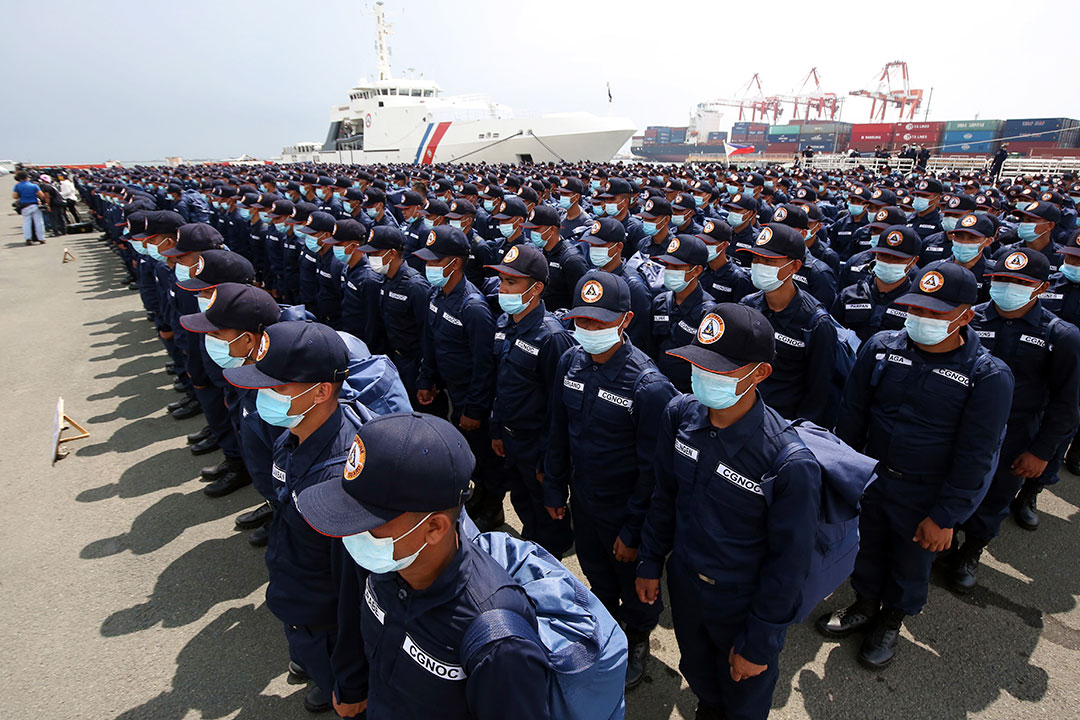
THE DEPARTMENT of Finance (DoF) is expected to present the proposed bill seeking to reform the pension system for military and uniformed personnel (MUP) to Congress by August.
Finance Undersecretary Maria Luwalhati C. Dorotan-Tiuseco said the DoF is currently waiting for the completed actuarial studies.
“Then the economic team will meet to draft the proposal. After, it will be presented to the technical working group, where there will be negotiations, and then we will finalize the consensus bill and present it to the President,” she told reporters on the sidelines of a British Chamber of Commerce of the Philippines briefing last week.
Once the bill is finalized, it will be presented to Congress by August.
The 19th Congress resumes its second regular session on July 24.
The proposed unified system of separation, retirement and pension of MUPs is included in the Legislative-Executive Development Advisory Council’s list of priority measures targeted for Congress approval by December.
Finance Secretary Benjamin E. Diokno earlier said President Ferdinand R. Marcos, Jr. supports reforming the MUP pension system, warning that the current setup is not sustainable and may cause a “fiscal collapse.”
The MUP pension program covers members of the Armed Forces of the Philippines, Bureau of Jail Management and Penology, Bureau of Fire Protection, Philippine National Police, Philippine Public Safety College, Coast Guard, and Bureau of Corrections.
Under the current system, MUPs do not contribute to their pension. Instead, the pension benefits are drawn annually from the national budget.
MUPs are also automatically promoted one rank higher upon retirement and can receive their pension after 20 years’ service, with no minimum pensionable age. The monthly pension is also automatically indexed to the salary of active personnel.
Ms. Dorotan-Tiuseco said that the economic team has recently concluded its roadshows to discuss the proposed reform with MUPs.
“We promised MUPs that whatever proposal we will present, it will really be based on data and information culled from the actuarial studies. At the same time, taking into consideration the recommendations and suggestions from MUPs we’ve spoken with,” she said.
“We’re very optimistic that we’ll have a consensus bill because the MUPs have been very gracious and engaging in dialogues with us,” she added.
However, many military personnel raised the issue of transparency when discussing the proposal to require them to contribute to their pensions, Ms. Dorotan-Tiuseco said.
“For example, the MUPs are willing to contribute, but they are asking: where will the funds be placed? Who will manage? They want details. We promised the Secretary of National Defense that we will develop and strengthen a government structure or system,” she added.
“They need to know where the money is going. Transparency, accountability. They want that if it’s not used judiciously, there should be penalties, and that we can provide, definitely. They want to take part in the management of the money,” she added.
Ms. Dorotan-Tiuseco also said that the current version of the proposed reform has incorporated input from military and uniformed personnel during the roadshow.
“We are studying all the proposals. One thing for sure is whatever we will present will be based on numbers and suggestions. At the same time, taking into consideration the objective of the reform, which is to make it sustainable. A sustainable pension system for the MUPs,” she added.
Earlier versions of the MUP reform proposed that personnel in active service would contribute 5% of their monthly pay for the first three years, which will be supplemented by a 16% contribution from the government to reach the 21% total monthly premium for the fund. This scheme would be adjusted until a 9% and 12% ratio is reached in the seventh year.
Meanwhile, new MUPs would pay 9% of their base and longevity pay, with a 12% contribution from the government.
The economic team has also said that the Government Service Insurance System will be tapped to manage the pension fund but noted that there will be no “co-mingling” of funds.
“The MUP’s pension will remain strictly independent from the pension of civilian government workers,” the DoF earlier said.
Representatives from the MUPs will also be included in an oversight committee to manage the pension fund.
Mr. Diokno has said that continuing the current pension system for MUPs is not “fiscally sustainable.”
Data from the DoF showed that accumulating pension liabilities may increase public debt by as much as 25% by 2030. Total unfunded pension liabilities have also reached P9.6 trillion, according to the Bureau of the Treasury.
National Treasurer Rosalia V. de Leon also earlier said that the government would have to spend P214 billion in 2023, P537 billion in 2030, and P1.5 trillion in 2040 to fund the pension requirements of retired personnel. — Luisa Maria Jacinta C. Jocson
Read the original article here.




























